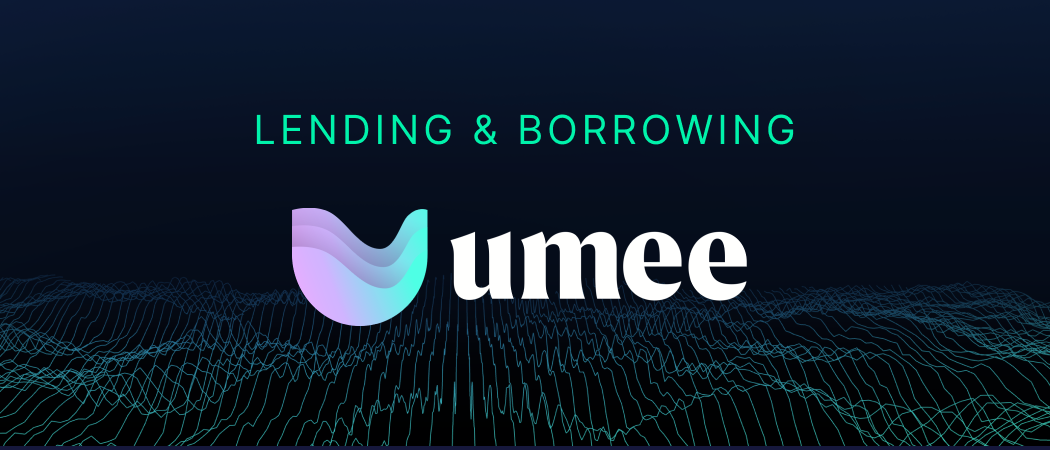Decentralised Finance (DeFi) protocols have become increasingly popular in recent years, as they offer a way to lend and borrow without the need for a central authority. DeFi protocols are built on blockchain technology, which allows for peer-to-peer transactions and eliminates the need for a third party. This makes DeFi protocols much more efficient and transparent than traditional financial institutions.
There are several different DeFi protocols available today, each with its own unique features and advantages. Some offer collateralised loans, while others allow users to earn interest on their cryptocurrency holdings, and some offer loans in both fiat and cryptocurrency.
While DeFi provides an attractive alternative to the traditional financial system, there is still a lot of room for improvement before billions of people can be onboarded. Umee is one such platform that aims to bring DeFi to everyone by building a cross-chain infrastructure that acts as the foundation for dApps and financial Legos.
Introduction to Umee

Umee was created to address three main issues that exist in DeFi, viz. detached yields, concentrated systematic risks, and isolated capital.
The project aims to break the inherent silos between blockchains by utilising bridging solutions towards interconnecting blockchains and encouraging better capital efficiency. The goal is to enable interchain lending and borrowing, multi-chain staking and delegations, plus cross-chain DeFi rates.
Umee is a Cosmos-based Cross Chain DeFi Hub for rates, staking, and interoperability. Cosmos is a decentralised network of independent blockchains that uses an Inter-Blockchain Communication protocol (IBC) that allows for independent, interoperable blockchains to transfer tokens and data between them easily. At the heart of the Cosmos Network is the Tendermint consensus algorithm that will enable it to achieve high transaction throughput while maintaining decentralisation.
Since the Umee blockchain is built upon Cosmos SDK, it is capable of interfacing with Ethereum and other blockchains. Assets can also be bridged across Cosmos ecosystems using the IBC, helping to optimise the capital flows through Umee. ERC20 tokens can participate on Cosmos-based networks, while Cosmos SDK-based tokens can exist as ERC20-native to participate on the Ethereum-based DeFi.
But Umee blockchain not only facilitates interoperability between the Cosmos and Ethereum ecosystem but also aims to achieve it on side chain architectures, layer two scaling solutions, and alternative base layer protocols.
With the proliferation of many blockchains in the crypto space, Umee stands out for its cross-chain DeFi hub that interconnects between blockchains. Besides IBC, the protocol uses decentralised infrastructure and Gravity bridge to achieve this interoperability.
The entire Umee network is powered by the UMEE token, which is used for paying network fees and protocol governance. This token system allows for network lending and borrowing functions on the Umee to have maximum capital efficiency and revenue generation whilst contributing to blockchain security through Proof-of-Stake.
Lending and Borrowing on Umee

Umee is the hub for DeFi across chains; it is a permissionless platform designed to serve different types of users and projects on their journey into DeFi. The blockchain allows for frictionless inter-chain lending and borrowing of digital assets.
As the foundational layer for DeFi protocols, Umee provides the necessary infrastructure for users and builders to access cross-chain leverage and liquidity. By connecting users to create inter-chain lending positions, Umee allows them to transfer capital between 40+ blockchains, uncover new earning opportunities, and research DeFi applications on various blockchain networks without friction or trust.
Users can also use a collateralised staked asset to secure the borrowed position and continue to receive their stake while participating in DeFi.
Umee further uses bridges that enable users to stake assets in Cosmos or ETH, using the rest of the ecosystem assets as collateral. The protocol comprises a collection of relayers that pass transactions from the Ethereum blockchain onto the Umee Network via Gravity Bridge. It also plays an integral role in allowing users to mint their tokens across chains.
In Oct. this year, Umee announced the mainnet upgrade of its native borrowing and lending module to support all Cosmos IBC assets to become the first BC-compatible lending-specific blockchain, interoperable with Ethereum and the entire Cosmos ecosystem.
With this feature, Umee facilitates the lending and borrowing of IBC assets, enables significantly faster and more cost-efficient transactions, unlocks fragmented liquidity and DeFi users across various protocols, and lays the foundation for enterprise-scale debt-trading applications.
As Umee moves towards building a unified ecosystem, CEO and founder Brent Xu says they will soon be adding “additional cross-chain DeFi functionality to deliver unprecedented debt market functionality across a variety of interconnected blockchains, ultimately facilitating a vibrant Web3 debt market.”
Umee also has an institutional lending DAO called UDX that offers a suite of tools, including a DeFi native yield curve and Loan Specific Blockchains to enable quantitatively derived DeFi interest rates.
Together, these products make Umee a borrowing and lending blockchain with the scalability, interoperability, and debt primitives capable of hosting enterprise-scale blockchain bond markets.
Ensuring Utmost Security

Security is essential in crypto, especially in DeFi, where smart contracts replace the financial institution in the transaction. In the fast-evolving and trustless world of crypto, potential vulnerabilities, protocol threats, hacks, and other risks can compromise a network’s security.
So, when it comes to security, Umee takes a proactive approach to prevent malicious acts. For that, it has partnered with several firms like Trail of Bits, Runtime Verification, PeckShield, Halborn, Forta, and Least Authority.
Being audited and verified by these several top auditors helps Umee ensure the safety of user assets and that the protocol’s security is continuously enhanced.
The UMEE token also secures the Umee network through staking. UMEE token holders who decide to stake or delegate UMEE earn a portion of inflationary rewards and fees generated from the protocol and have the right to participate in protocol governance.
A Strong Backing
The Umee protocol is being built by a highly experienced team of professionals not just from the mainstream institutions like JP Morgan, Amazon, Fidelity, DRW, Google, Meta, and Apple but also from prominent crypto and DeFi firms, including ConsenSys, Tendermint, MetaMask, Yearn, Sushi, Infra, Binance, and Polygon.
The grand ambitions of the Umee team are also backed by some of the prominent names in the crypto industry, such as Polychain Capital, Coinbase Ventures, Jump Trading, ConsenSys, Figment, GSR, BKCM, CMS, Tendermint, Cosmostation, Stake Fish, Algorand, IDEO CoLab, and Argonautic Ventures.
The project raised $6.3 million in seed funding in June 2021 to start building out its protocol and then, in December, raised $32 million in a token sale before its mainnet launched in February.
How to Lend and Borrow on Umee
To get started on Umee, you must first transfer your assets to the platform. Once done, you can supply them on the Umee Market to start earning a lending yield. Certain assets supplied on the Umee Market can then be used as collateral for cross-chain borrowing. The best thing is you can withdraw some or all of their assets from the Umee Market at any time.
When you make a deposit through Umee, you are basically adding liquidity to a pool that other borrowers use. This means that as a depositor, you earn lending interest on your deposits and have the ability to use these deposits as borrowing collateral without sacrificing the lending interest being earned.
Once collateral has been deposited, you can choose which asset(s) you’d like to borrow, as different assets require different levels of over-collateralisation to borrow based on asset risk profile, trading volume, historical price volatility, and the market cap of the asset being borrowed.
There is no specific date the loan must be paid off or mandatory periodic interest payments. You can even pay off the loan partially to deleverage your positions in volatile market conditions.









